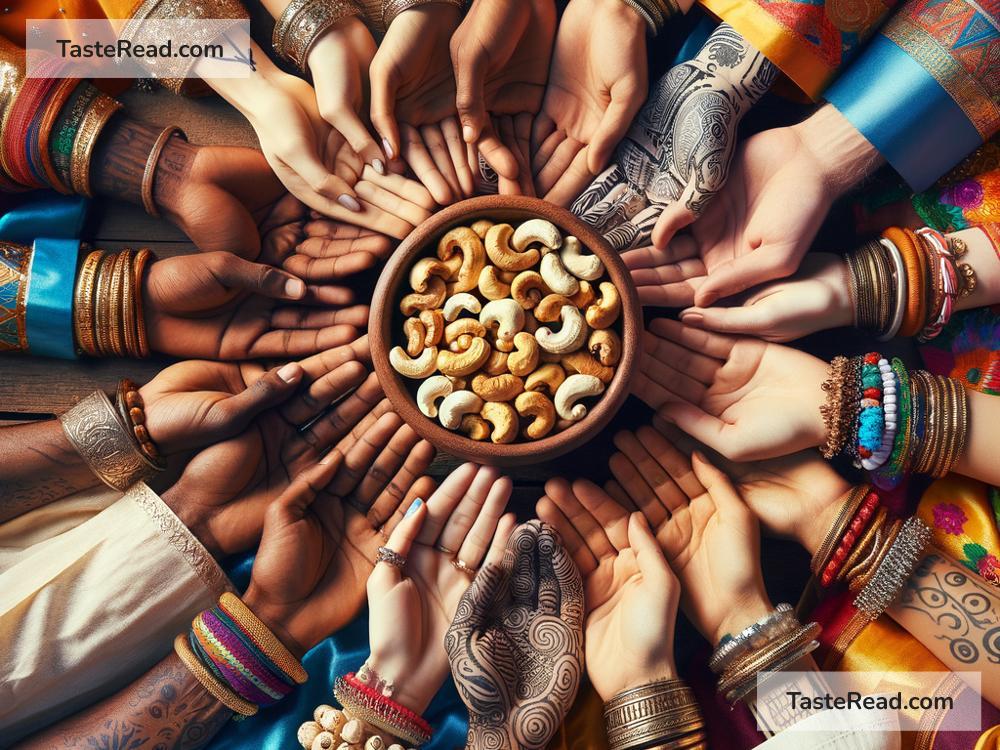How Cashews Became Symbols of Unity
In today’s world, food often carries more meaning than just satisfying hunger. From sweet cakes to spicy chili peppers, different foods represent cultures, stories, and emotions. One food item that may surprise you with its symbolism is the humble cashew. This small, curved nut has grown to represent unity and togetherness in many communities around the world. In this blog, we’ll explore how cashews went from a tasty snack to a powerful symbol of unity.
A Nut with a Global History
Cashews originally come from Brazil, where they grew on cashew trees in the Amazon rainforest. Indigenous people in the region used cashews as food and medicine for centuries. When Portuguese explorers arrived in the 1500s, they noticed how valuable this small nut was to the local people. These explorers took cashews back to Europe, and from there, cashews spread across the world to regions like Africa and India.
Today, cashews are grown in many countries with warm climates, including Vietnam, Nigeria, and Indonesia. As cashew farming expanded, so did the connections between people of different cultures. Farmers, traders, and consumers all play a role in the journey of the cashew from the tree to the plate. This global journey has made cashews more than just food—they’ve become a bridge between cultures and nations.
Cashews and Community
One of the reasons cashews symbolize unity is how they are shared as snacks in social settings. Around the world, cashews are enjoyed at gatherings of friends and family. Whether it’s a wedding in India, a festival in Brazil, or a holiday party in the United States, bowls of cashews are often placed on tables for people to enjoy together. Sharing food is one of the simplest and oldest ways humans connect with each other, and cashews have played their part in this tradition.
In some countries, giving cashews as a gift is a way to show care and respect. For example, in India, cashews are often included in gift boxes of nuts and sweets during celebrations like Diwali. The act of sharing cashews sends a message: “We are connected, and I value our bond.”
Cashew Farming: A Lesson in Cooperation
The process of growing and harvesting cashews also reflects the idea of unity. Cashew farming often requires teamwork and collaboration. Farmers must work together to plant, care for, and harvest the nuts. Once harvested, cashews go through several steps to remove their shells and prepare them for eating. In many countries, women play a key role in these processes, often working in cooperative groups to support their families and communities.
Organizations and fair-trade programs have also emerged to help cashew farmers earn a fair price for their work. These programs bring people together, allowing farmers to share knowledge, resources, and support. When farmers succeed, entire communities benefit. Through cooperation, cashew farming teaches lessons about shared goals and mutual success.
Cashews in Symbolic Art and Traditions
Cashews have also found their way into art and traditions that celebrate unity. In some cultures, the curved shape of the cashew is seen as a symbol of connection, much like a handshake or a hug. This idea has inspired artists and storytellers to use cashews as metaphors for peace and togetherness.
For example, in parts of West Africa, the cashew tree is seen as a symbol of resilience. The tree grows strong and provides shade, food, and shelter to those around it, teaching communities about the importance of supporting one another. In this way, the cashew tree itself becomes a reminder of unity and cooperation.
A Symbol for Challenging Times
In recent years, the cashew has taken on new meaning as a symbol of unity during tough times. During the COVID-19 pandemic, some communities used food-sharing initiatives to help those in need, and cashews were often included in food aid programs. This simple act showed that even a small nut could bring people together and provide comfort.
Cashews also remind us of the importance of global connections. The next time you eat a cashew, consider how many people were involved in bringing it to you—from the farmer who grew the nut to the workers who packed it to the shopkeeper who sold it. Cashews are proof that we are all linked, even when we come from different corners of the world.
The Power of Small Acts
Cashews becoming symbols of unity might seem unusual at first, but their story is a simple and inspiring one. These small nuts have traveled across continents, been shared at tables, and brought people together through farming and traditions. They teach us that even the smallest things can hold big meanings.
As you enjoy your next handful of cashews, think about the connections they represent. Whether it’s through cooperation, sharing, or simply appreciating their journey, cashews remind us that unity can grow from the most unexpected places—and sometimes, all it takes is a nut.


